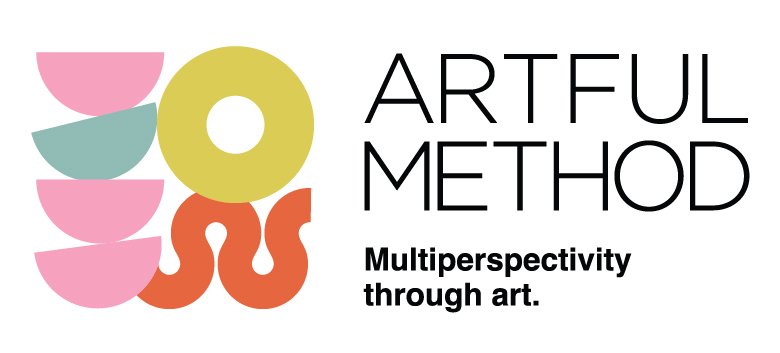The Research Behind the Method
How Art Trains the Brain
The Art of Flexible Thinking
Why Flexible Thinking Is the Most Teachable—and Transferable—Skill of the Future
In an age where information and tools are increasingly automated, the true competitive advantage lies in how humans think.
The ability to shift perspectives, connect ideas across systems, and make meaning in ambiguity—what we call flexible thinking—isn’t an inborn talent. It’s a trainable capability with measurable impact on creativity, collaboration, and decision-making.
The Research Behind the Method
For decades, Harvard’s Project Zero, led by Shari Tishman and David Perkins, has studied how people think, learn, and transfer knowledge across domains. Their findings dismantle a common myth: that thinking ability is fixed or confined to one context. Instead, they show that the mind is remarkably teachable when thinking is made visible, practiced deliberately, and reinforced through culture.
Tishman and Perkins’ framework distinguishes between thinking skills (what you can do) and thinking dispositions (what you tend to do).
A disposition combines three elements:
Ability – knowing how to think critically or creatively
Inclination – wanting to use that ability
Sensitivity – recognizing when a situation calls for it
Most people have the ability—but lack the inclination or sensitivity to apply it. The result is a “knowing–doing gap” that explains why even talented teams can fall back on habitual thinking under pressure.
Project Zero’s work demonstrates that dispositions can be cultivated through structured reflection and repeated practice—what they call thinking routines. Over time, these routines shift not only how people reason, but also when and why they choose to deploy certain mental moves. This is the essence of cognitive flexibility.
Learning That Transfers
One of the central challenges in leadership development is transfer—whether a learning experience in one context actually changes behavior in another. Perkins and his colleague Gavriel Salomon introduced the distinction between low-road transfer (automatic) and high-road transfer (intentional, reflective).
Their research shows that for transfer to occur, learning must:
Make thinking explicit, not implicit.
Provide multiple contexts for applying a concept.
Encourage abstraction of underlying principles.
Build metacognition—awareness of how and when to use a skill.
In other words, people don’t automatically apply what they learn; they must be taught how to notice when to use it. This is precisely what The Art of Flexible Thinking workshops do through art-based inquiry.
How Art Trains the Brain
Art offers the perfect laboratory for cultivating transferable thinking. When we slow-look at a work of art, we practice the mental movements that underpin innovation:
Observation and curiosity—noticing what others miss
Perspective-taking—considering multiple interpretations
Pattern recognition—seeing relationships between parts and whole
Tolerance for ambiguity—holding uncertainty without rushing to closure
Neuroscience now confirms what artists have long intuited: engaging with art strengthens the brain’s association networks, the very systems responsible for creative problem-solving and adaptability. As one meta-analysis in Your Brain on Art notes, even brief reflective encounters with art enhance focus, cognitive flexibility, and empathy—capabilities essential for thriving in complex systems.
From the Gallery to the Boardroom
Our Art of Flexible Thinking workshops operationalize these insights into measurable outcomes. Participants move through guided dialogues with art that are deliberately designed to activate and track shifts in thinking patterns.
Using our proprietary Flexibility Index—inspired by aesthetic development research and VTS (Visual Thinking Strategies) markers—we can visualize cognitive growth in real time.
Teams emerge not just with new ideas, but with new mental habits:
They ask better questions.
They see multiple sides of a challenge.
They make sense of complexity with greater ease.
And crucially, they transfer those habits to meetings, projects, and decision-making processes.
The Business Case for Thinking Differently
Organizations already invest heavily in tools and technology; few invest in the human systems that determine how those tools are used. Yet research consistently shows that teams trained in creativity principles produce 350% more ideas that are 415% more original than untrained groups. Studies of reflective practice indicate improvements in adaptability, collaboration, and problem-solving across domains.
The implication is clear: flexible thinking is not a soft skill—it’s a strategic one.
It can be taught, practiced, measured, and transferred. And it’s the skill that future-ready organizations need most.
Bringing It to Life
Our workshops combine art, psychology, and business insight to create a uniquely impactful learning experience. Each session blends:
Immersive visual inquiry (art observation and dialogue)
Behavioral science (theory of dispositions and transfer)
Applied reflection (mapping thinking moves to workplace scenarios)
Data visualization (Flexibility Index progress tracking)
The result is a culture where curiosity, empathy, and open-mindedness are not ideals—they’re daily practices.
Flexible thinking isn’t something you have or don’t have. It’s something you build.
And the art of seeing differently is the first step toward thinking differently.

